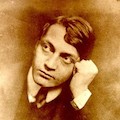Free Thought 1911/5
Books
The Legend of Christ. (Ch. Virolleaud: Die Christus-Legend. Humboldt-Bibliothek I. 1911. Price crown.) The figure of Jesus and the many suggestive records on which the soon-to-be-institutionalized church relies. . The thought of the 21st century is set and analyzed in a different way than the Christian idea, which for two thousand years has been appropriated, distorted and preserved by Christianity. During this type of study, Christ's activities, over-colored with miracles, are unraveled and faith based on the idea of redemption is placed on a realized basis. Above all, we are convinced that the great messiah's expectation, which for thousands of years before Christ's presence continually sent and prophesied his own prophets and divine missionaries to redeem millions of people, has come to an end. The appearance of Jesus and the role attributed to Him is only a powerful expression of the purer and louder repetition of what Christians so far have been doing all over the world, with more or less success, to subvert the existing bad order and put the unjust in a better state. The wondrous divine prophets of Rome, Greece, Persia, Egypt bear witness to the number of foreplay and characters needed for the coming of Christ the Messiah. At all times and for all peoples, the thought of the Messiah was preoccupied with the imagination of the oppressed, and in each case promised a blissful solution, or the replacement of the pregnant conditions of that time with a more free and carefree golden age. "The first shall be the last, and the last the first," said Jesus, and wonder what time was short for the last, who yearned not for a more just and better order, and for the age of the first, who and perhaps they would not have turned against the assisting Messiah if the silence were to be shed? This is a common feature of all Messiahs. Jesus had to be destroyed, even though Jesus was not a subversive, a revolutionary, because the doctrine he preached consisted in resting in the present condition and in patience. Ο the dissatisfaction and upheaval he instigated had both a dampener and a safety brake. His death was needed by his followers, so that when his form shifted to the proper time frame, he could invoke his form and role as is typical of the life of every prophet: divine in origin, obscured by miracles and wonders, and great death. The fact that the first record of Jesus' existence and functioning dates back nearly a hundred years after the death of Christ demonstrates the influence that many common prophetic features of the imagination of the people on the founder of all religions may have had on this retrospective establishment of His being.
This is the course of Virolleaud's investigation into the legend of Christ. He analyzes these legends with great readiness, relying strictly on scientific knowledge. The study, divided into small chapters, states the circumstance to consider that each of the Christ legends is nothing more than the pursuit of many of the similar [190] strings of the Messiah, the person, the being, and the actions of Christ. the most blessed of natural phenomena: identify it by day. From a deep perspective, he concludes that the traits that make up Jesus are a complex of imagery made by theoretical calculation, just like the Messiahs of other old religions, which cover everything but the very shape of Jesus.
Issue Informations
Src: http://mtdaportal.extra.hu/szabadgondolat/1911/1911_05.pdf
Original Publication: Szabadgondolat, 1.5, May 1911
Other Languages:
| Lge | Name |
|---|---|
| DE | |
| FR | Libre Pensée 1911/5 |
| ES | El Pensamiento Libre 1911/5 |

